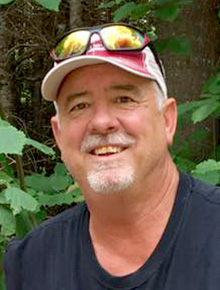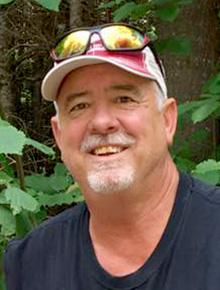
I recently spent a few days in western South Dakota shooting prairie dogs. This was a great trip and the subject of another column in the next few weeks. I was wondering what other kinds of creatures made a life on the grazed grasslands of this part of the state.
As I was researching what those creatures might be, I came across a question that I just could not answer. “What is the difference between an amphibian and a reptile?”
I like to think I know quite a bit about the outdoors and the creatures that live in it, but this question humbled me greatly. So I researched it and would love to share with you what I learned.
Amphibians are frogs, toads, newts and salamanders. They have complex life cycles that require they spend their time between water and land. Their skin needs to be kept moist in order to breathe and survive. They tend to have tender, smooth skin. Amphibians can breathe both under water and out of water.
Reptiles include crocodiles, alligators, turtles, lizards and snakes. These creatures breathe only through their lungs and thus have scales to keep them from drying out. They can spend long periods under water but do need to come up for air.
This created confusion for me. Turtles are considered reptiles who only breathe through their lungs, but turtles also spend the winters in Minnesota living under the ice. This does not seem to compute for me. As much as I looked, I could not find the answer to this conflicting evidence.
Both of these categories are called herpetofauna or “herps” for short. All herps are cold-blooded. This means they cannot regulate their own body temperatures by themselves. They utilize the environments in which they live to regulate body temperatures.
This is when a turtle sits on a log to absorb the energy of the sun. This warms them up. A cold dip in the lake can cool them off. These creatures on land may move in and out of vegetation to heat or cool their bodies. As a result, generally these animals will be substantially more active in the middle of the temperature span and less active when it is really hot or really cold.
Short of alligators and crocodiles, reptiles and amphibians are the stuff kids’ dreams are made of. How many kids have you ever known that would not try to catch a frog or carry around a turtle if they could find one? I have seen 10 kids spend all day catching crawdads and other lake creatures, placing them in a bucket and then just staring down into it for the rest of the day.
The species and population numbers of reptiles and amphibians in particular are great indicators of the health of the environment they live in. Because amphibians have soft, tender skin, it easily absorbs toxins and pollution. These are called indicator species. Lakes, rivers, wetlands and streams devoid of these creature types signal very poor water quality and when in high numbers, they indicate dramatically better water quality.
One of the new threats to these venerable species is something called neonicotinoids. These are chemical seed coatings that protect row crop agriculture from many different pests. These chemicals have been shown to be beneficial to crop yields but are also shown to be very hard on pollinators and other desirables species.
Some research has shown that as these chemicals are leached off and travel into surface water sources, they can have a detrimental effect on everything from water insects to larger amphibians. As more research is done the effects of these seed coatings will become clearer.
Most people give very little thought to reptiles and amphibians as they can’t see them running round like you can a deer or a turkey. This does not make them un-important. As a conservationist and public lands advocate, I care about all of the creatures, big and small.
Take some time out of your busy schedule and take a walk in the tall grass or ankle-deep water and reconnect to the outdoor world. Look to see how the reptiles and amphibians in your neck of the woods are doing, then play your part in their protection. If you and I don’t do it, then who will?
Scott Rall, Worthington, is a habitat conservationist, avid hunting and fishing enthusiast and is president of Nobles County Pheasants Forever. He can be reached at scottarall@gmail.com. or on Twitter @habitat champion.



